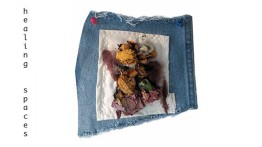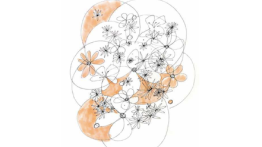A More Perfect Union
POSTED ON: May 19, 2021
Thanks to the initiative of two art students, Cooper’s literary and art journal, Union, is again being published but this time in an innovative format to encourage a synergetic relationship between text and design. The students, senior Calla McInnes and junior Yeji Kim, thought that the Union reboot was a chance to rethink standardized magazine layout while giving students the chance to stretch their design wings.
“We started brainstorming ideas over the summer about what would be the best idea for something online that wouldn’t cost a lot,” Calla said. But they realized that in this year of virtual living, the tactile was more important than ever. “We’re missing something physical right now,” they said. To make things more challenging, the rest of the staff had graduated, so the two needed a plan that would let them produce the magazine by themselves if necessary.
They decided to offer five mini-grants to interested students. In addition to monetary support, the grants give students access to graphic designers and copy editors to assure the publications are executed proficiently. Yeji explained that “the idea of a microgrant came from the various relief COVID grants that were saw throughout the summer. Money would be a problem for a lot of the students, so we were able to provide a resource.”
That resulted in five separate booklets under the Union title that run the gamut in terms of shape and content. According to Calla, giving multiple grants ensured that subjects would be wide ranging since, as they put it, “It’s a weird time to choose one particular theme as so many of us have different problems we are facing, so we thought to let students focus on what they are most passionate about.”
The grant winners include Oaklee Thiele, a first-year art student, who worked with others to make work about disabled artists; Maura O’Connor, a junior, who took the Seinfeld approach by creating a booklet about nothing entitled “Bootless”; first-year art student Ananya Malagi’s zine considers her relationship to dance; Riley Howard, the only architect of the group, dedicated their section to architecture of healing; finally, Eleven Muldrow, a senior in the School of Art, made a booklet of her poetry.
The two editors said that one of the most satisfying aspects of the project was watching interest grow: “At the beginning we were the only two involved with Union,” said Calla. Now there are seven staff members. “And we are working from all over, including Japan,” said Yeji. “Having this number of staff also lets us have a lot of one–to–one sessions with the makers.”
To order your limited edition of this special issue of Union, go here. And if you have any questions or interest in working on the next edition of Union, write here: unionjournal@gmail.com.






